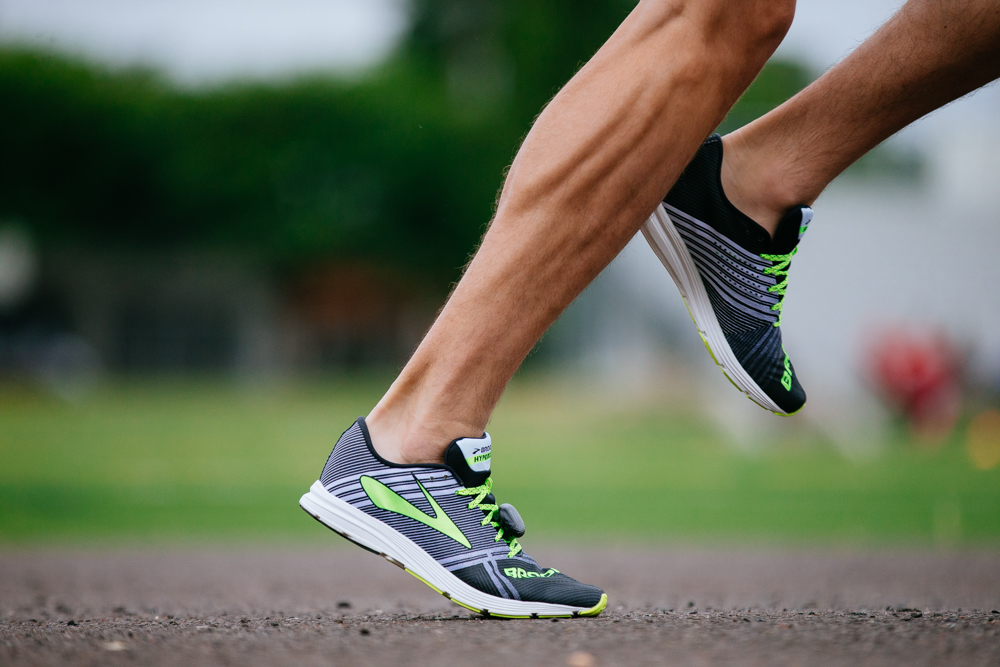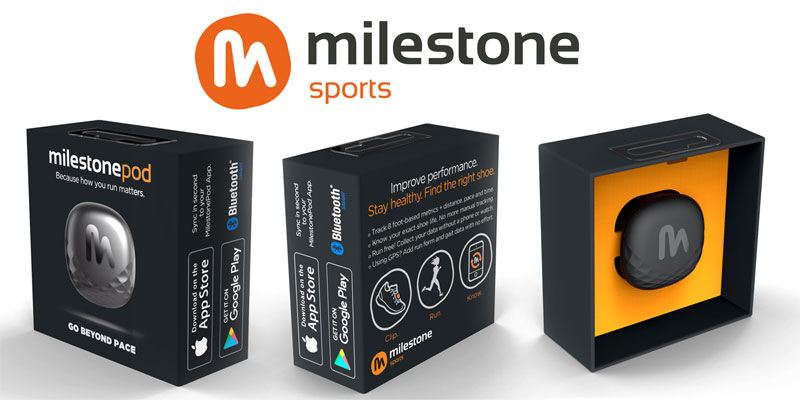Milestone Sports has been acquired by Zwift in June of 2018.
The Milestone Pod will work with Zwift Run for a virtual running experience, training workouts, and virtual community. Stay tuned as Big Peach Running Co. looks to incorporate Zwift Run in the near future.
Updated April 10, 2019
Can the $30 Milestone Sports Pod provide consistent and reliable data like a more expensive GPS watch? We had Guest Advocate and regular contributor, Austin Bonds, try the Milestone Sports Pod for several weeks to give us his thoughts.
Go Beyond Pace
Pace is good. Pace is a simple measurement to gauge the completion of a single mile from a time standpoint. Running too is a simple activity, but the physiological movements of the body are strikingly complex. The feet, legs, and hips should ideally move in a graceful manner along the sidewalks and the roads; unfortunately, there are times when they simply won’t cooperate. Is it possible, then, to go beyond pace and examine some other measurements that have a bearing on injury prevention and running efficiency?
The Milestone Sports Pod ($24.99) is such a device. The Pod is a wearable tracker that attaches to any running shoe and records a handful of noteworthy gait metrics (more on these later) that can be synced to the Milestone app via Bluetooth in a few seconds. The result is a window into your current running ability – and what can be refined with repeated use – because how you run matters.
Inside the Box
Like every other technological gadget in the marketplace today, packaging matters (I largely credit Apple for perfecting this technique with their phones, tablets, and music devices). The Milestone Pod is secured inside an orange cardboard box, and underneath this small box is a second one that houses the coin-size battery (CR2032). Below the battery box are three inserts: an FCC statement concerning interference with radio and television reception; a five-step Quick Start guide with a few illustrations for installation of the Pod on a shoe; and a Milestone Pod sticker for the automobile to display your Pod affinity with pride.
As to assembly, the process is straightforward. I used a nickel to unscrew the Pod from the back cover and then inserted the battery. I thumped the top a few times to verify a green light. Speaking of which, green means go, right? According to the Milestone website, a green color indicates 60-100% battery life; yellow, 30-59%; and red, 29% or less. Red means replacement.
The Registration Process
After fully assembling the Pod, I pulled up Google Play to download the app for my LG G4 smartphone (according to the phone settings, the app size appears to be roughly 90 megabytes). Keep this figure in mind for storage purposes. After opening the app, I was prompted to enter some “mandatory information” for accurate calculation of running data, i.e. a “custom algorithm” for me. I entered my name, e-mail address, password, gender, unit preferences (miles/pounds/feet/inches), gender, height, and weight. Birthday, country and ZIP code are optional fields.
I thought this would complete the registration process, but the Milestone Pod app is thorough. Next, I entered information for the primary shoe. I located the Saucony Zealot 2 from the list and made my selection. Speaking of which, the list of models for Saucony is comprehensive, and I will be curious to see if Milestone continues to update their list across all brands as models are typically updated on an annual basis. On the dashboard, you can click the shoe icon to see the weight and stack height of your chosen shoe. A rating option (1-5 stars) can also be submitted.
Finally, this is an added touch: inputting shoe mileage. If your shoe already has mileage prior to owning a Pod, the existing total can be submitted (or estimated, unless you happen to be a spreadsheet nerd like me and track every run with every shoe). I typed in 90.25. Before returning to the dashboard, I received a message to secure the Pod within the shoe laces so it doesn’t fall off in the middle of a run. Thanks for the advice – it’s time to run and accumulate some data to analyze.
Before sharing a summary and a few insights, I’d like to note that I completed ten runs in the Zealot before studying the data. Below is a quick synopsis of the first run, along with some thoughts on the other nine and what readily stood out from an analysis standpoint.
Run 1
Garmin Forerunner 220: 9.25 miles / 169 steps per minute (SPM)
Milestone Pod: 9.11 miles / 170 SPM
It’s clear, even from the first run, that the “custom algorithm” provides striking accuracy as the Milestone Pod is separated by only .14 miles from what the Garmin 220 reads. Likewise, the cadence totals are within one step of another.
Regarding Pod metrics, I noticed a major difference in the first and second run for foot strike. In Run 1, I landed on the forefoot (toe) 95% of the time, 1% on the midfoot, and 4% on the heel. In Run 2, the previous forefoot figure dropped to 0% as heel strike spiked to 100%. Why the drastic change? I thought my feet or legs might be tired and thus create some sloppy form, but as it turns out, placement of the Pod on the shoe plays a role in accurate measurements. According to the Milestone website, shoe drop should dictate placement. Use the second lace for shoes with an 8 millimeter or higher drop; shoes under 8 millimeters use the third lace.
Runs 2-10
As to the other nine runs, the distance on the Pod and the Garmin 220 are close – very close. Take run 4: 8.21 miles on the Pod and 8.25 on the Garmin. And run 8: 11.20 on the Pod and 11.25 on the Garmin. There will be some variations for sure, but this to be expected as the Start and Stop parameters factor into the Pod algorithm. Also, Garmin watches use satellites to track your exact position. According to the Garmin website, “Garmin GPS (Global Positioning System) receivers are typically accurate to within 10 meters.”
Like distance, I discovered that cadence figures between the Pod and the watch were within one step of another, if not the same. Speaking of which, the generally accepted target cadence is 180 steps per minute; runners who fall below 160 are likely overstriding, which translates into a higher rate of impact and a higher risk of injury. The Big Peach Running Co. TransFORMed Running program, available at all seven locations, exists to help improve running form and reduce the risk of injury.
Runficiency

Runficiency, the last metric listed for each individual run, is the combination of cadence, stance time, and stride length in a single metric. The Milestone website lists the global average Runficiency score at 73. Of my ten runs in the Zealot 2, 90 (out of 100). was the highest. Along with a respectable cadence, I was proud to see the rate of impact consistently falling in the low range.
Like other wearable trackers, the Pod exists to provide runners with meaningful data that helps them get better at their craft. It highlights what looks good and what is lacking. It reveals bright spots but also casts a spotlight on weak areas. The Pod dashboard, simple and colorful in design, keeps track of total shoe mileage and the numbers from the latest run. Lastly, for newer runners or those who aren’t ready to invest in a GPS watch, the $24.99 price tag for the Pod is undoubtedly an appealing draw. For these reasons and more, the Pod packs a punch.
What’s left to do then but decide to go beyond pace?
Austin Bonds is a Guest Advocate at the Big Peach Suwanee location.



